Studies on television subscription trends have consistently shown that the number of cable television subscribers is decreasing. In contrast, online video consumption keeps increasing.
In 2018, the number of cable TV subscribers dropped from 73% to 67%, and Netflix’s over-the-top (OTT) service surpassed cable and satellite subscriptions for the first time. Every new major OTT streaming service is contributing to the decline of paid TV subscriptions and increasing overall video consumption.
The future of video consumption
In order to understand what the future of video consumption might look like, it is important to consider recent technological developments, such as second-screen interaction. Second-screen interaction refers to the use of social media and other apps by viewers to interact with other viewers in real time while watching TV.
More than 70% of adults in the US currently use a “second screen” while watching TV. But that “second screen” usually takes away from the content they’re watching by splitting their focus, it rarely adds to the experience. To change this, Livery has developed second-screen apps that allow millions of concurrent viewers to become more involved in the show they are watching through visual interactions, rather than just text-based interactions through platforms like Twitter.
Over-the-top (OTT) technology allows video content to be delivered directly to connected devices through the internet. This technology has enabled creators to bypass major broadcasters and connect directly with their end users for both live and on-demand content.
On-demand vs. live OTT
There are two main types of OTT services: subscription video-on-demand (SVOD) services like Netflix, Apple TV, and Disney+, which offer pre-recorded video that can be watched anytime, and live streaming services like Twitch, Facebook Live, and YouTube Live, which allow users to easily stream live video.
In 2017, 48% of internet users in the US watched at least one live streaming event per week, and in 2018, users in the 18-24 age group spent an average of 29 minutes per day watching SVOD content. In the late 2010s, Twitch reported that its users spend an average of 95 minutes per day watching live gaming, and these numbers have only grown since.
How technology is changing the landscape
Ultra-low latency live streaming is a relatively new technology that allows for stable and scalable live streams with minimal delay, typically between 0.2 and 3 seconds. This is achieved through the use of technologies like Web-RTC and CMAF.
The widespread adoption of mobile devices, particularly smartphones, with internet capabilities has also contributed to the increase in video consumption on the go. In 2018, 90% of the American population had smartphones, and the 18-34 age group consumed an average of 5.47 hours of video on their mobile devices per week.
Future implications for streaming
The combination of these technologies (second-screen interaction, over-the-top technology, ultra-low latency live streaming, and mobile internet) are the foundational elements of new and innovative video concepts such as:
- Re-invented and newly created game shows
- Direct audience engagement for sports and eSports
- Shoppable video and live e-commerce events
- Gamified learning and communication within companies
- And interactive events such as live-streamed wine tastings
To read more about these changes in technology and how they can be applied, click here to read the full article.




